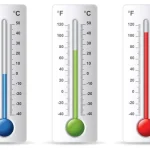Calculating percentages is a fundamental mathematical skill, essential in various aspects of daily life, from determining discounts and taxes to solving statistical and financial problems. One common example is calculating 10% of a given number. In this article, we will explain how to calculate 10% of 50 and expand the concept to other percentage-related problems to enhance your understanding. This will allow you to tackle any similar percentage problems with ease and confidence.
What is 10% of 50?
The calculation of 10% of 50 is a simple, yet important, exercise in understanding percentages. Here’s how it’s done:
- Step 1: Convert 10% into a decimal.
Since 10% means “10 out of every 100,” the percentage can be expressed as a decimal by dividing 10 by 100:
10%=10100=0.1010\% = \frac{10}{100} = 0.1010%=10010=0.10 - Step 2: Multiply the decimal by 50.
Now, multiply 0.10 by 50 to find what 10% of 50 is:
50×0.10=550 \times 0.10 = 550×0.10=5
Thus, 10% of 50 is 5.
This is a straightforward calculation, but it is also a concept that applies to many real-world situations, such as sales, discounts, and interest rates. Let’s dive deeper into why understanding percentage calculations is crucial and explore more examples.
Real-World Applications of Percentage Calculation

1. Discounts and Shopping
One of the most common uses of percentages is to calculate discounts in stores. If a store is offering a 10% discount on an item that costs $50, we calculate the discount like this:
- Step 1: Convert 10% into a decimal:
10%=0.1010\% = 0.1010%=0.10 - Step 2: Multiply the decimal by the original price to get the discount amount:
50×0.10=550 \times 0.10 = 550×0.10=5
The discount is $5, so you subtract that from the original price:
50−5=4550 – 5 = 4550−5=45
Therefore, the final sale price of the item is $45.
2. Financial Interest Rates
Percentages are also used to calculate interest rates on loans, savings, and investments. For example, if you have an account that offers 10% annual interest on a balance of $50, the interest earned in one year would be:
50×0.10=550 \times 0.10 = 550×0.10=5
So, after one year, your total balance would be $50 + $5 = $55.
3. Statistics and Data Interpretation
In statistics, percentages help interpret data and trends. For instance, if a survey reveals that 10% of respondents prefer a specific brand, and the survey sampled 50 people, the number of people preferring that brand is calculated by:
50×0.10=550 \times 0.10 = 550×0.10=5
This means 5 people out of 50 favor that brand.
Expanded Example: Calculating Different Percentages of 50
Let’s apply the same methodology to calculate other common percentages of 50.
- 5% of 50:
Convert 5% to a decimal:
5%=5100=0.055\% = \frac{5}{100} = 0.055%=1005=0.05
Multiply 50 by 0.05:
50×0.05=2.550 \times 0.05 = 2.550×0.05=2.5
Therefore, 5% of 50 is 2.5. - 20% of 50:
Convert 20% to a decimal:
20%=20100=0.2020\% = \frac{20}{100} = 0.2020%=10020=0.20
Multiply 50 by 0.20:
50×0.20=1050 \times 0.20 = 1050×0.20=10
Thus, 20% of 50 is 10. - 50% of 50:
Convert 50% to a decimal:
50%=50100=0.5050\% = \frac{50}{100} = 0.5050%=10050=0.50
Multiply 50 by 0.50:
50×0.50=2550 \times 0.50 = 2550×0.50=25
Hence, 50% of 50 is 25.
These examples reinforce the idea that calculating percentages involves the same basic principles, regardless of the specific percentage or number in question.
Visualizing Percentages with a Diagram
To better illustrate the concept of percentages, consider a pie chart where the total represents 100%, and each segment represents different percentage values. Below is a basic visual representation using Markdown mermaid syntax:
pie
title Percentage Breakdown of 50
“10%” : 5
“20%” : 10
“50%” : 25
“Remaining 20%” : 10
In this diagram, you can visually see how 50 is divided into parts according to different percentages.
Why Mastering Percentages Matters
Learning about percentages isn’t just a maths thing: it’s a life skill. It comes up in everyday life from personal finance to business to science, so it’s worth mastering. Here’s why.
Finally, Financial Literacy: Knowing how to calculate percentages is essential for understanding interest rates, taxes, and discounts, as well as the implications for financial decisions that we all face daily.
Professional and academic. Percentages are an important topic in many fields. They are needed to interpret statistical data in studies, to solve problems in engineering, and to understand other research.
Everyday Decision Making: Whether you need to adjust a recipe or plan a budget, percentage calculations help to turn complex information into manageable choices.
Conclusion
For example, to calculate 10 per cent of 50 is a simple calculation but it also forms the basis of how percentages are understood more generally. Once you know how to convert percentages to decimals and multiply by the relevant number, you can use this technique in many different situations: when shopping, dealing with bills, analyzing statistics, and so on. They are everywhere we turn, and the ability to calculate them quickly and accurately is an essential component of success in many professions as well as one’s personal life.
Also Read:
Fantasy Team Name Generator Football
Interpersonal vs Intrapersonal
Override CSS Style in PrimeVue
Directed Graph in Python LeetCode
Dropdown from a Search Bar in Vue
JavaScript Map of the Keys Method
Centimeters to Feet and Inches
Computer Memory and File Sizes

One thought on “How to Calculate 10% of 50 – A Comprehensive Guide”